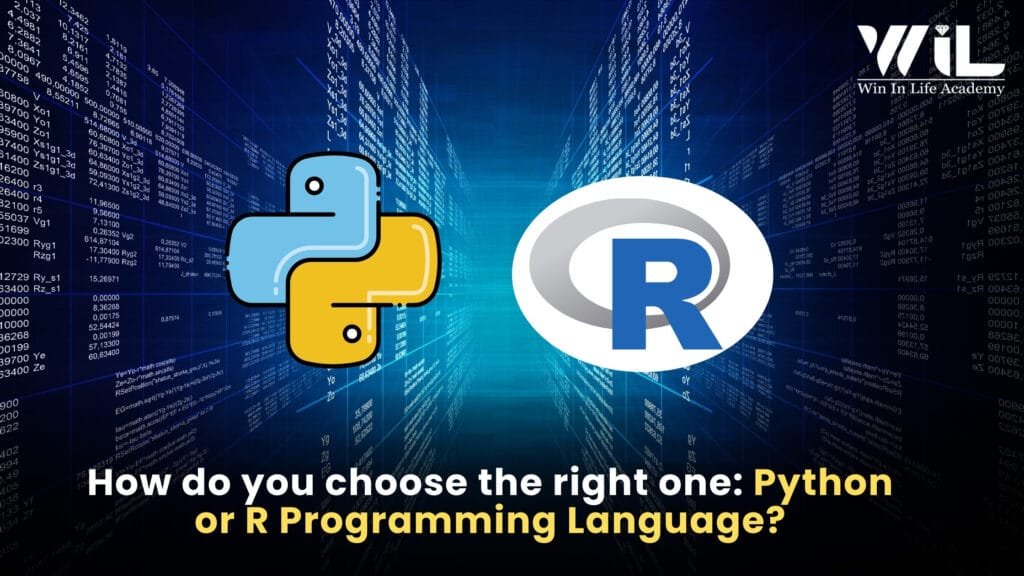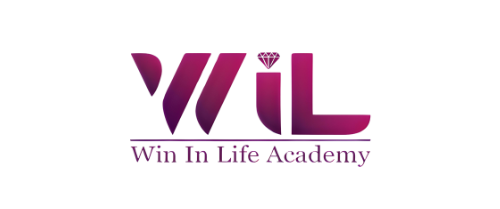For a business analyst, proficiency in programming languages is one of the most important skills. Business or Data analysts use Structured Query Language (SQL) to specifically communicate with databases. Once you look out for cleaning, manipulating, analysing, and visualizing data, you will choose either Python or R for business analytics.
We will be going to explore how Python or R for business analytics is used including how it differs from one another, how you will choose the right one for your work and the ways that you learn them. Let’s start with the next step to learn Business Analytics with two languages, consider enrolling in PG Diploma in Business Analytics from Win in Life Academy.
What is Python?
Python is programming language specifically used to build websites, software, and automate tasks. It is a general-purpose language that is easy to learn and use. Python is known for its intuitive syntax to mimic natural language. You may use Python code for a variety of tasks and for that, three applications are included: Data science and data analysis, web application development, and automation or scripting.
What does “high-level” mean?
High-level programming languages specifically prioritize human readability and comprehension through their intuitive syntax, exemplified by languages like Python, C++, C#, and Java. In contrast, low-level languages are designed for direct machine understanding.
Consequently, code written in a high-level language undergoes a translation process, transforming it into low-level machine code that the computer can execute.
What is R?
R is an open-source programming language and software environment that is tailored for statistical computing and graphics, offering a comprehensive suite of tools for data analysis, modelling, and visualization. Its extensive package library extends its capabilities, making it a popular choice among statisticians, data scientists, and researchers for tasks ranging from basic calculations to advanced machine learning, all while providing powerful data visualization capabilities.
R programming languages fall into three broad categories that are manipulation data, statistical analysis, and visualizing data.
How do I choose between Python and R in Business Analytics?

Whether you chose Python and R in Business Analytics, both are in demand programming language skills and will allow you to perform data analysis you will encounter. You can choose these two programming languages based on your background, interest, and your career goals.
Based on your decision-making, consider some of these things for Python or R for Business Analytics:
Learning Curve
While both Python and R in Business Analytics are generally accessible programming languages, their ease of learning can depend on your prior experience. Python, initially crafted for software development, tends to be more intuitive for individuals familiar with languages like Java or C++. Conversely, R, with its strong statistical focus, might present a smoother learning curve for those with a background in statistical analysis.
Overall comparing Python and R in business analytics in terms of learning, Python generally offers a more accessible entry point due to its straightforward and easily understood syntax, resulting in a gentler learning curve. Conversely, R presents a steeper initial challenge, demanding a greater investment of effort at the outset. However, once learners navigate this initial hurdle and gain proficiency in R’s specialized functionalities, its use becomes considerably more streamlined.
Note: once you learn one programming language, typically, it is easier for you to learn another language.
Company
With effective collaboration hinges on shared understanding, and in technical teams, this translates to the utilization of a common coding language. Adopting the team’s established language streamlines code sharing, reduced communication barriers, and foster a more cohesive and efficient development environment, and ultimately, enhances successful projects with Python and R in business analytics.
Generally, it is a good idea to speak up the language of Python and R in Business Analytics as the team will be working. By collaborating with your team, it is easier to share code and collaborate on projects.
However, if you are starting today, you may not know what company you will be eventually work for. Just have a look for a few job listings from the companies and in general industry norms that you are most interested in. Search for what the companies tend to list, is it R or Python for business analytics as a requirement? This could be a good indication of which direction to take you learning.
Strengths and weaknesses
Python and R in business analytics offers overlapping capabilities for data manipulation, but their distinct strengths suggest prioritizing one over the other based on anticipated workflows. If your work heavily leans towards specific data analysis tasks, focusing on the language that demonstrated superior performance in those areas will likely yield greater efficiency and effectiveness.
| Feature | Python | R | Business Analytics Advantage |
| Data Manipulation & General Purpose | More versatile for production environments and integrating with other systems. Uses libraries like Pandas for data manipulation. | Primarily designed for statistical computing and graphics. Has a rich ecosystem of packages (e.g., dplyr, tidyr) for data wrangling. | Python: Better for building end-to-end analytical pipelines, deploying models, and integrating with web applications/databases. R: Excels in exploratory data analysis (EDA) and rapid prototyping of statistical models. |
| Statistical Modeling & Machine Learning | Offers comprehensive machine learning libraries (Scikit-learn, TensorFlow, PyTorch) with a focus on general-purpose ML. | Provides a vast array of specialized statistical packages (e.g., caret, stats) catering to diverse statistical modeling techniques. | Python: Stronger for deploying machine learning models in production, especially deep learning. R: More extensive for nuanced statistical analysis and hypothesis testing, crucial for academic/research-driven analytics. |
| Visualization | Matplotlib, Seaborn, and Plotly provide good visualization capabilities. | ggplot2 is renowned for its elegant and highly customizable graphics. | R: ggplot2 often produces publication-quality visualizations with greater ease, particularly for complex statistical plots. |
| Community & Learning Curve | Large and diverse community with extensive resources, but the learning curve for statistical modeling can be steeper for those without prior programming experience. | Strong community focused on statistics and data science, with a shallower learning curve for statistical analysis but can be more challenging for large scale software development. | Python: Easier to learn for general programming and data science tasks. R: Easier to grasp statistical concepts and apply them rapidly, especially for users with a statistics background. |
| Scalability & Performance | Generally, performs better for large datasets and production deployments due to its general-purpose nature and optimized libraries. | Can be slower for very large datasets and may require more memory due to its interpreted nature and focus on statistical operations. | Python: More suitable for handling big data and building scalable analytical applications. |
Career Path
If your career aspirations lean towards R vs Python for business analytics or data analysis, particularly the intricacies of statistical calculations and data visualization, then learning the R programming language could be a strategic and beneficial step for your career. R’s strengths in these specific areas align well with such as passion, it offers a powerful toolkit to help you explore and present data insights. Therefore, you need to consider how mastering R will contribute to your long-term professional development within the field of business analytics.
On the other hand, for those aspiring to a career as a data scientist, focused on leveraging big data, artificial intelligence, and deep learning algorithms, Python emerges as a superior choice for you. Its robust ecosystem of libraries and frameworks specifically designed for these domains makes it an indispensable tool for tackling complex data-driven challenges.
The same is specifically true, if you professional or personal interests extends beyond data and into R vs Python for business analysis, programming, development or other computer science fields. You must know that Python is a general-purpose language that professionals use it for wide range of tasks than that of using R programming language.
Python and R in Business Analytics: By the Numbers

By the numbers, it is very important to recognize that Python and R in business analytics often work in tandem. Many data scientists leverage R programming language for exploratory analysis and statistical modelling and then transition to Python for productionizing their work. The combination of these approach allows them to harness the best of both worlds.
R is a language born from statistical needs, and this heritage shines through in its extensive library of statistical packages. If your work heavily involves complex statistical modelling, hypothesis testing, or specialized visualizations, R provides a robust and well-supported environment.
Python, on the other hand, is a general-purpose language that has become a dominant force in data science. Its strength lies in its versatility. It excels at data manipulation, machine learning, and integrating data analysis into broader software systems. This makes it ideal for tasks like building data pipelines and deploying models in production.
| Feature | R | Python |
| Primary Focus | Statistical computing and graphics | General-purpose programming |
| Strengths | – Statistical modeling <br> – Data visualization <br> – Specialized statistical packages | – Data manipulation (Pandas) <br> – Machine learning (Scikit-learn) <br> – Integration with other systems <br> – General purpose programing. |
| Typical Use Cases | – Academic research <br> – Statistical analysis <br> – Financial modeling | – Machine learning applications <br> – Data pipelines <br> – Web development <br> – Automation |
| Learning Curve | Steeper learning curve for general programming, but easier for statistical tasks. | Relatively easier learning curve, especially for beginners. |
| Community and Libraries | Strong community focused on statistical analysis. Extensive statistical packages. | Large and diverse community. Extensive libraries for various tasks, including data science. |
How to learn R or Python for Business Analytics
Python and R in business analytics are both excellent and highly capable languages for data analysis, and either is a viable starting point for beginners with no prior coding experience. Fortunately, regardless of whether you choose to learn Python or R for business analytics first, you will have access to a wealth of educational resources and materials to guide your learning journey, numerous online tutorials, courses and communities are readily available to support your progress.
PG Diploma in Business Analytics

Win in Life Academy’s PG Diploma in Business Analytics course will help you learn both the languages. The course is typically structured to help you get a robust foundation in both R vs Python for Business Analytics, recognizing their importance in the data analytics field. The program emphasizes practical application, ensuring students don’t just learn syntax, but also how to utilize these languages to solve real-world business problems.
This is achieved through hands-on exercises and industry-backed capstone projects, where students are required to apply their knowledge in comprehensive analytical tasks. Specifically concerning Python, the curriculum also covers areas such as Data analysis with NumPy and Pandas, Data Visualization with Matplotlib, Seaborn and Folium, and Machine Learning.
Furthermore, the program’s curriculum is specifically designed to be industry-relevant, aligning with the demands of data analytics sector. Win in Life Academy also provides placement support, connecting graduates with their network of partner organizations. This indicates a focus on providing skills that are highly valued by potential employers.
To aid in the learning process, Win in Life Academy provides dedicated mentors for doubt clarification, and utilizes live virtual training, allowing for interactive learning experiences. This comprehensive approach ensures students gain the necessary proficiency in both R and Python to excel in their data analytics careers.
Note: For you, it is better to learn both the languages and get proficient in both as it will help you in your future endeavours.
Earn your Professional Certification
Interested in starting your career as a Business Analyst, Win in Life Academy offers you PG Diploma in Business Analytics to help you build you job-ready and industry-relevant skills to match in the current era. Gain an immersive understanding of python and R in business analytics, data analytics and data science job roles. Here you will learn to clean and organize your data for analysis as it will help you build critical skills by using tools like Spreadsheets, SQL, and R programming.
Frequently Asked Questions
What are the primary programming languages Python or R in Business Analytics, and which should I choose?
The primary languages are Python and R in business analytics. The choice depends on your background, interests, and career goals. Python is versatile and good for general-purpose tasks and machine learning, while R excels in statistical analysis and visualization.
What are the key differences between Python and R in business analytics terms of their strengths?
Python is strong in data manipulation (Pandas), general-purpose machine learning (Scikit-learn), and integrating with other systems. R is strong in statistical modelling, data visualization (ggplot2), and specialized statistical packages.
Is Python and R in Business Analytics easier to learn for a beginner?
Python generally has a gentler learning curve for beginners due to its straightforward syntax. R might be easier for those with a background in statistics.
Which language is better for machine learning, Python or R for Business Analytics?
Python is generally considered stronger for deploying machine learning models in production, especially deep learning, due to libraries like Scikit-learn, TensorFlow, and PyTorch. R is more extensive for nuanced statistical analysis and hypothesis testing.
What is the significance of “high-level” programming languages, and how does it relate to Python and R in business analytics?
High-level languages like Python and R in business analytics prioritize human readability and comprehension. They are easier to learn, and use compared to low-level languages.
How do I decide which language to learn based on my career path?
If you’re interested in statistical analysis and data visualization, R is a good choice. For data science, big data, AI, and general programming, Python is preferred.
Can Python and R in Business Analysis be used together?
Yes, they are often used in tandem. Many data scientists use R for exploratory analysis and statistical modelling, and then Python for productionizing their work.
What are the advantages of learning both Python and R in Business Analytics?
Learning both languages provides a comprehensive skill set, allowing you to handle a wider range of data analysis tasks and increasing your versatility in the job market.
How can a PG Diploma in Business Analytics help me learn Python and R for business analytics?
Programs like the one offered by Win in Life Academy provide structured learning, hands-on experience, industry-relevant curriculum, and placement support, ensuring you gain proficiency in both languages.
What are the key benefits of using Python for data manipulation and integration?
Python’s Pandas library provides robust data manipulation capabilities, and its general-purpose nature allows for seamless integration with web applications, databases, and other systems, making it ideal for building end-to-end analytical pipelines.





